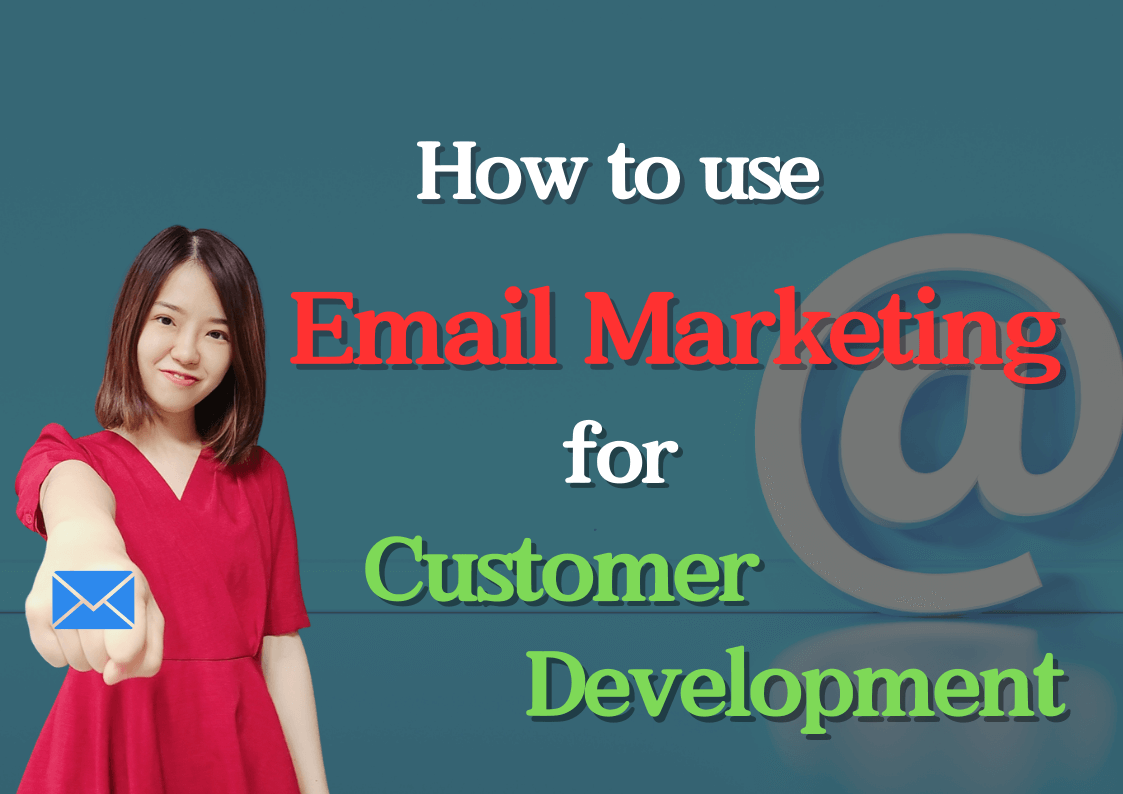Explore effective B2B content marketing strategies with a focus on leveraging four essential marketing tools. Discover how these tools can enhance website traffic and cultivate customer lists without incurring additional costs.
1. What is B2B Marketing? B2B Marketing vs B2C Marketing!
B2B marketing refers to business-to-business marketing, where companies market their products or services to other businesses. For instance, YKK manufactures zippers, and its potential B2B customers include clothing and backpack brands like functional clothing brand OneBoy and women’s wear brand ZARA.
On the other hand, B2C marketing is more commonly known, involving companies marketing directly to consumers. For example, shopping at stores like Walmart or using online platforms like Shopee falls under B2C marketing.
Here are four main differences between B2B and B2C marketing:
(1) Target Customers
In B2B marketing, the customers are other businesses, typically procurement, engineering, business executives, or corporate decision-makers. In contrast, B2C marketing targets individual consumers.
(2) Purchasing Decision Process
B2B marketing often involves complex purchasing decision processes because businesses require evaluations from different levels of personnel, and the amounts involved are usually larger. Some publicly listed companies may even require proposals from at least three vendors for evaluation, leading to evaluation periods ranging from six months to a year. In contrast, B2C marketing usually involves personal purchases, with decisions being quicker, as consumers are more susceptible to emotional and impulsive influences.
( Read More: How to find a B2B decision maker?)
(3) Relationship Building
Establishing long-term stable partnerships is crucial in B2B marketing. Therefore, many early-stage marketing activities focus on brand exposure rather than immediate conversion. In B2C marketing, while relationship building is still important, products that require repeat purchases, such as daily meals or coffee, are emphasized.
(4) Marketing Message Delivery Methods
B2B marketing often requires providing more detailed information such as product specifications, features, and organizational charts to assist businesses in differentiation. In contrast, B2C marketing tends to focus more on emotional appeal and consumer experience.
2. Make a B2B Marketing Strategy
Understanding the differences between B2B and B2C, below are recommendations for planning out an export B2B marketing strategy:
(1) International Market Demand
Before expanding into global markets, thorough market research is essential. Understanding the demands, cultural differences, competitive environments, and regulatory requirements in different countries and regions is crucial for devising appropriate B2B marketing strategies. For instance, if you sell “power supplies,” you should provide EU double round plugs for Germany and UK triangular plugs for India.
(2) Localized Pricing Strategy & Competitor Research
Different regions have different values and economic conditions, necessitating the formulation of localized pricing strategies. Understanding the local market’s price competitiveness and customer purchasing power ensures that your prices remain competitive in that market.
In B2B marketing, understanding the customer’s marketing budget is crucial. For example, if a customer’s demand for chocolate can be met by a product like “Ferrero Rocher” there’s no need to push “GODIVA” to them. Even if your product is superior, the budget will always be a limiting factor. Therefore, conducting market research on local preferences and competitor analysis for each market is essential. By leveraging the advantages of competitors and offering products with differentiated features, you can better serve your customers.
(3) Establishing Partnership Relationships
It is more appropriate to initially seek partners who understand the local market, such as agents, distributors, or cooperative enterprises. These partners can help you enter the local market more quickly, providing localized sales channels and after-sales services.
Once you become more familiar with your partners, you can even collaborate on joint exhibitions and organize regional marketing events such as local social media platforms, offline exhibitions, and activities. This ensures that your marketing messages are closely aligned with the needs and preferences of local customers.
(4) Understanding Procurement Search Habit
Customers often ask me why we need a Spanish website when we communicate with Spanish customers in English.
Indeed, procurement may search for suppliers in English, but what if 40% search by the local language?
They may find your competitors’ multilingual websites but not yours, missing out on potential opportunities. Each B2B customer contributes significantly more in procurement than B2C customers, so do you want to miss out on this opportunity?
(Read More: Six Must-Knows to Make Lead Generation for B2B Business via a multi language website!)
3. Four tools for B2B Content Marketing Strategy
(1) Website Optimization for SEO
Conversion rate: ★★★★☆
Time consumption: ★★★★☆
Cost: ★★☆☆☆
When we understand the search habits of B2B procurement, we can lay out website content based on the highest search volume keywords. However, high-traffic keywords (10W-100W) typically have major competitors occupying the top few pages of rankings. Therefore, it is recommended to focus on lower-traffic keywords (1000 – 10,000) with long tail Keywords but more precise high-conversion keywords.
(2) Google Advertising
Conversion rate: ★★☆☆☆
Time consumption: ★☆☆☆☆
Cost: ★★★★★
Utilizing Google search ads allows you to quickly find potential customers (purchasers) with purchasing needs. They may still be in the evaluation stage, gathering information on all vendors and products, but haven’t decided which vendor to cooperate with. Google search ads are also suitable for targeting high-traffic keywords to evaluate the cost of advertising that can cover subsequent B2B procurement orders.
However, advertising costs globally are much higher than in Taiwan, with costs ranging from US$30 to US$100 per click. Therefore, it is recommended to seek specialized marketing companies that focus on advertising for export-oriented B2B businesses. This ensures that your advertising budget is not quickly depleted only to find that most clicks are from B2C end-users.
( Read More: Transform your Google Ads into a powerhouse for your sales, helping you get B2B inquiries effectively)
(3) Video Marketing
Conversion rate: ★★★☆☆
Time consumption: ★★★☆☆
Cost: ★★★☆☆
B2B video marketing platforms can include YouTube,TikTok,Instagram, etc. YouTube is particularly important, as B2B searches for product keywords on YouTube are likely intended to understand how a certain product is used and its features, indicating potential comparison by procurement.
Small and medium-sized enterprises can increase product exposure through video content, attracting more target audiences, thereby increasing the chances of customers inquiring about products. Additionally, using video platforms can increase the likelihood of being seen by potential customers for products that are not ranking well on SEO for highly searched product keywords.
However, competition on YouTube is becoming increasingly fierce. Understanding how to identify topics that viewers want to see, write scripts, consistently produce high-quality videos, and manage channels all require extensive planning and effort. Instead of tackling this alone, consider outsourcing to a B2B video marketing channel management team. This will save you time and effort!
(4).Dealfront
Conversion rate: ★★★☆☆
Time consumption: ★★★☆☆
Cost: ☆☆☆☆☆
The Dealfront is very convenient, known as a “website monitoring expert” that shows which companies have visited your website. Since B2B companies often have their own IP, you can know what pages they have visited and what products they are interested in based on this IP. Currently, viewing which companies have visited is completely free, and this tool can be used to collect customers who are interested in your company but haven’t left inquiries.
To identify decision-makers, you can utilize our “Email Tracker“ to find potential leads. Target those customers who spend more time on specific product pages on your website, and then use “EDM Marketing“ to extend the conversation on relevant topics.
( Read More: 5 Steps to Write a High Response Rate of B2b cold email templates)


4.Find B2B Agents, Retailers, and Wholesalers
B2B Leads Generation Tool
The four B2B marketing tools introduced above mainly attract potential purchasers to view the website through content marketing, thereby leaving inquiries and obtaining customer lists.
If you want to quickly receive hundreds of customer lists in a short time, you can also use our “Sales Automation Tool” by entering product keywords, you can search for customer lists in 220 countries at once.
We also collect potential customers through “Customs Data”, global yellow pages, exhibition, and map searches. For more information, feel free to Whatsapp or Email us.
















